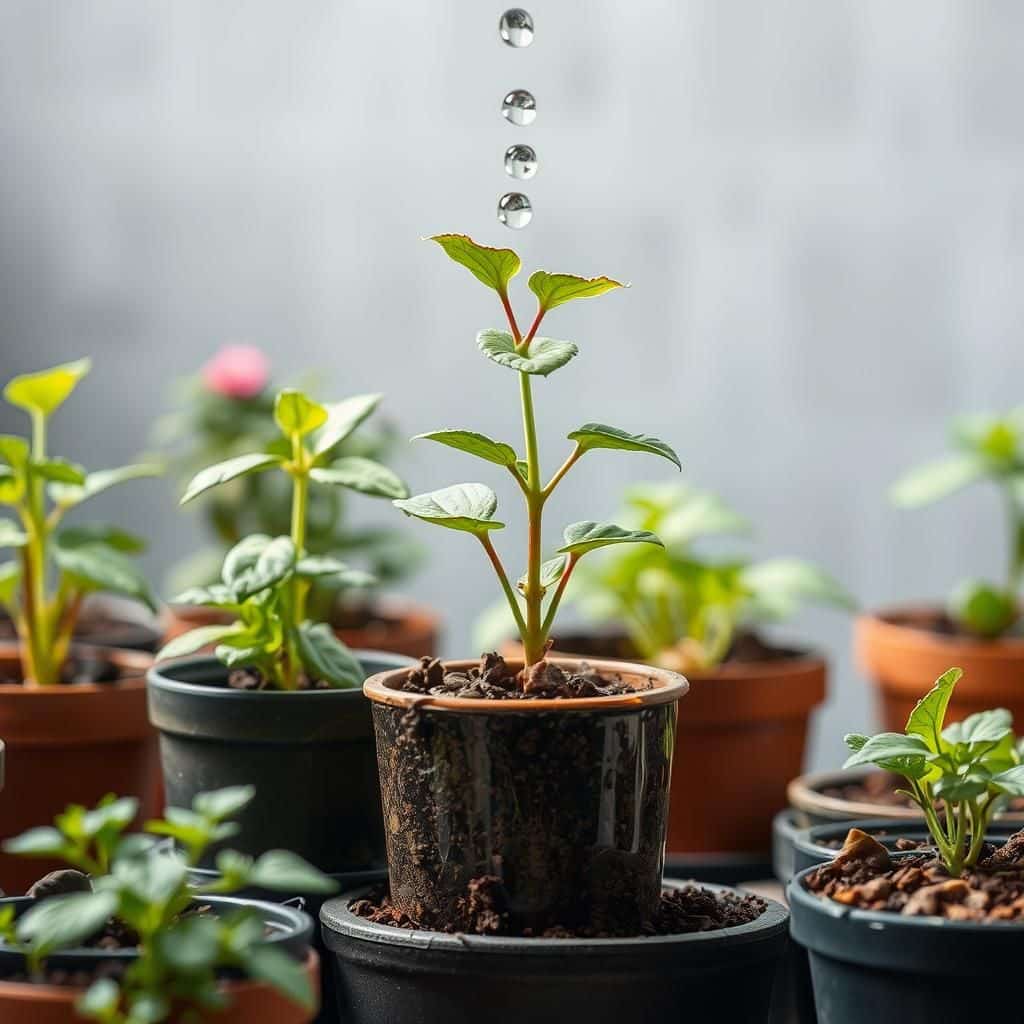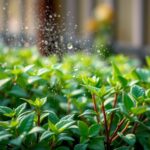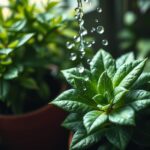What is the Correct Way to Water Plants? Essential Tips for Healthy Growth

Watering plants is a fundamental aspect of gardening that significantly impacts their health and growth. Understanding the correct techniques can make all the difference between a thriving garden and wilting foliage. This article delves into essential tips for watering plants effectively, covering the importance of timing, methods, and frequency. Whether you are a seasoned gardener or a beginner, mastering the art of proper plant hydration will help you cultivate a vibrant garden. Discover how factors like soil type, climate, and plant species influence your watering practices, and learn how to ensure your plants receive just the right amount of water for optimal growth.
The Correct Way to Water Plants
Properly watering plants is essential for their health and growth, as it ensures they receive the necessary moisture without over-saturation or drought stress. The first step is to assess the soil moisture; it's crucial to check if the top inch of soil is dry before watering. Water should be applied directly to the root zone, ideally using a watering can or a drip irrigation system, to avoid wetting the leaves, which can lead to fungal diseases. It's important to water early in the morning or late in the afternoon to minimize evaporation and ensure the roots absorb the moisture effectively. Additionally, the frequency and amount of water depend on the type of plant, the size of the pot, and the climate conditions, so adjustments may be necessary to maintain optimal growth conditions.
Understanding Soil Moisture
Understanding the soil moisture level is vital in watering plants correctly. Plants require different amounts of water based on their species, stage of growth, and environmental conditions. A simple method to check moisture is by sticking your finger into the soil; if it feels dry up to your first knuckle, it’s time to water. Additionally, using a moisture meter can provide a more precise measurement which helps in preventing over or under-watering. The moisture level not only influences plant health but also impacts the nutrient availability within the soil.
Watering Techniques
The way you water your plants has a significant effect on their health. A slow and steady flow of water is recommended to allow the soil to absorb moisture evenly. Drip irrigation systems or soaker hoses can be incredibly effective for garden beds because they deliver water directly to the root zone, reducing evaporation and water waste. For potted plants, using a watering can with a narrow spout can help control the flow and prevent overwatering. Always ensure that water penetrates deeply into the soil to encourage root development.
Timing of Watering
The timing of watering plays a crucial role in plant care. Early mornings or late afternoons are ideal as the temperatures are cooler, reducing evaporation and allowing plants to absorb water without stress. Watering in the heat of the day can lead to rapid evaporation and may cause water to run off the soil instead of soaking in. Furthermore, watering during the cooler parts of the day can prevent plant leaves from developing sunburn, which can occur when hot sun hits wet foliage.
See also:
Signs of Over and Under-Watering
Recognizing the signs of over-watered or under-watered plants is key to maintaining their health. Over-watered plants typically exhibit yellowing leaves, a wilting appearance despite moist soil, and a rotten smell from the roots. Conversely, under-watered plants may display dry, crispy leaves, wilting, and stunted growth. It's essential to regularly check both the leaves and the soil to identify the signs accurately and adjust your watering habits accordingly to ensure plants thrive.
Adjusting Watering Based on Climate
Adjusting your watering routine according to the climate is crucial for plant health. In hot, dry conditions, plants lose moisture rapidly and may need daily watering, especially if they are in pots. Conversely, during cooler seasons or in humid climates, the need for watering may decrease significantly. It's important to monitor rainfall and humidity levels and adjust your watering schedule accordingly. Additionally, factors like wind speed and temperature fluctuations should be considered to ensure that plants receive adequate water without risking over-saturation.
| Watering Technique | Frequency | Best Time |
|---|---|---|
| Drip Irrigation | 2-3 times a week | Morning |
| Soaker Hose | 1-2 times a week | Late Afternoon |
| Watering Can | 3-4 times a week | Morning |
Understanding Soil Moisture Levels for Optimal Plant Watering
Proper irrigation involves not just the act of watering but also an understanding of soil moisture levels. Plants depend on moisture found in the soil to absorb the necessary nutrients for growth. It's essential to check the moisture level of the soil regularly, as different plants require varying degrees of wetness. Overwatering can lead to root rot, while underwatering can stress the plant, leading to wilting and growth issues. A reliable method for ensuring you're watering correctly is to insert your finger an inch into the soil; if it feels dry at that depth, it's time to water. Additionally, using tools like moisture meters can aid in accurately gauging soil hydration without guesswork.
Why Soil Type Affects Water Retention
The type of soil significantly impacts how much water it can retain. Sandy soils drain quickly, often requiring more frequent irrigation, while clay soils hold moisture longer but can become waterlogged if overwatered. Loamy soils provide a balance, offering both drainage and moisture retention, making them ideal for most plants. Understanding your soil type helps you determine the best watering schedule to ensure your plants thrive without the risk of excess moisture.
The Importance of Water Quality on Plant Health
Water quality is crucial for plant health; tap water often contains chemicals like chlorine and fluoride that can be harmful. Using filtered or rainwater is an excellent alternative, as it tends to be softer and more natural, promoting healthier growth. It's essential to avoid using water that has been treated with harsh chemicals, as they can disrupt the nutrient uptake and potentially damage delicate root systems.
See also:
When and How to Water Different Types of Plants
Different plants have unique watering needs based on their species, size, and growing conditions. For instance, succulents and cacti thrive on infrequent watering, preferring dry conditions, while tropical plants generally require more consistent moisture. It’s important to adapt your watering routine based on the type of plant you have, taking into consideration factors such as seasonality, growth stage, and environmental conditions to provide them with the best care.
Techniques for Efficient Watering
Employing efficient watering techniques can lead to healthier plants and conservation of water resources. Using methods such as drip irrigation ensures that water penetrates deeply into the soil, reaching the roots directly without wastage. Alternatively, utilizing a soaker hose can provide a slow and steady release of water, promoting even distribution. Mulching around plants helps retain moisture, reducing the frequency of watering while keeping the soil temperature stable.
Signs Your Plants Need Water
Being able to identify the signs that your plants need water is essential for maintaining their health. Wilting leaves, dry and crumbling soil, and yellowing foliage often indicate that a plant is underwatered. Additionally, looking for signs of stress such as leaf drop or slow growth can also be indicators that the watering routine needs adjustment. Monitoring these signals and responding promptly can ensure your plants remain lush and vibrant.
Questions from Our Readers
What is the best time of day to water plants?
The best time of day to water plants is early in the morning or late in the afternoon when temperatures are cooler. This helps prevent water from evaporating quickly and allows plants to absorb moisture effectively.
How much water do plants need?
The amount of water plants need varies based on species, soil type, and climate. Generally, it's important to water deeply but infrequently, allowing the soil to dry out between waterings to promote healthy root growth.
See also:
Should I water plants from above or below?
It is often better to water plants from below by using deep watering techniques or by soaking pots, as this encourages roots to grow downward and prevents fungal diseases associated with overhead watering. However, some plants may benefit from foliar watering under specific conditions.
How can I tell if my plants need water?
You can tell if your plants need water by checking the top inch of soil; if it feels dry, it's time to water. Additionally, you may notice drooping leaves or a change in color, which can indicate that your plants are thirsty.

If you want to read more articles like What is the Correct Way to Water Plants? Essential Tips for Healthy Growth, we recommend you check out our Plants category.
Leave a Reply
Related Articles